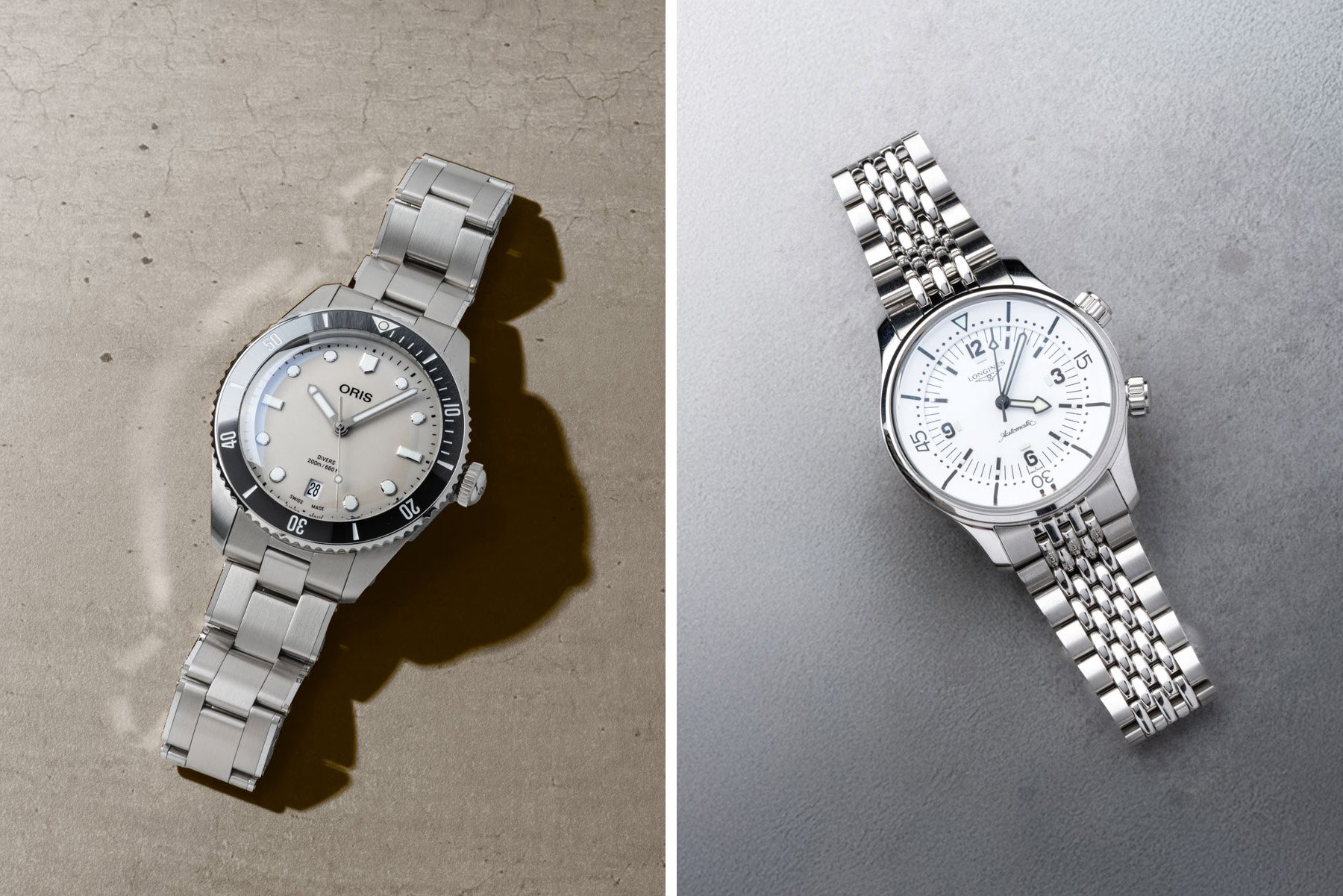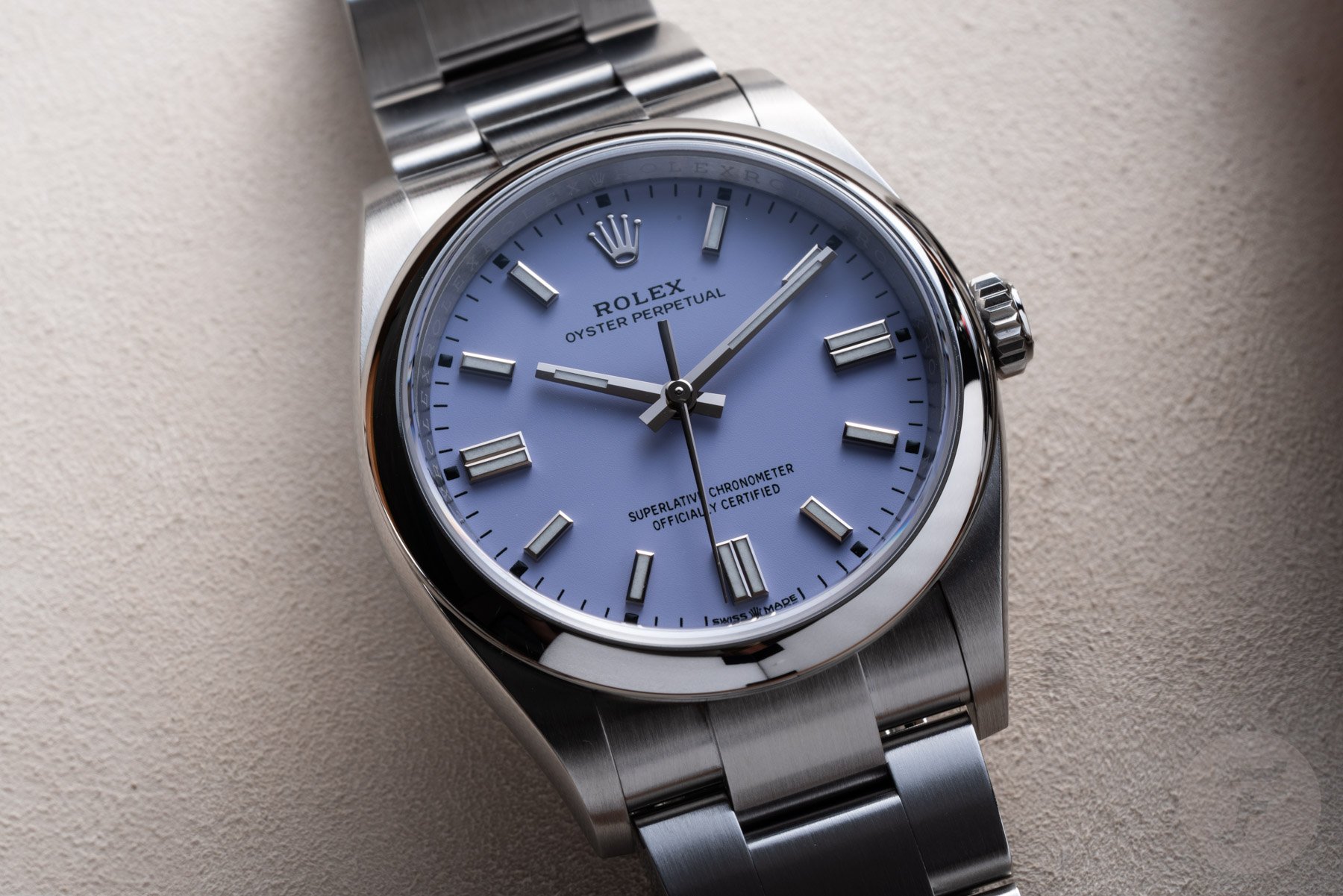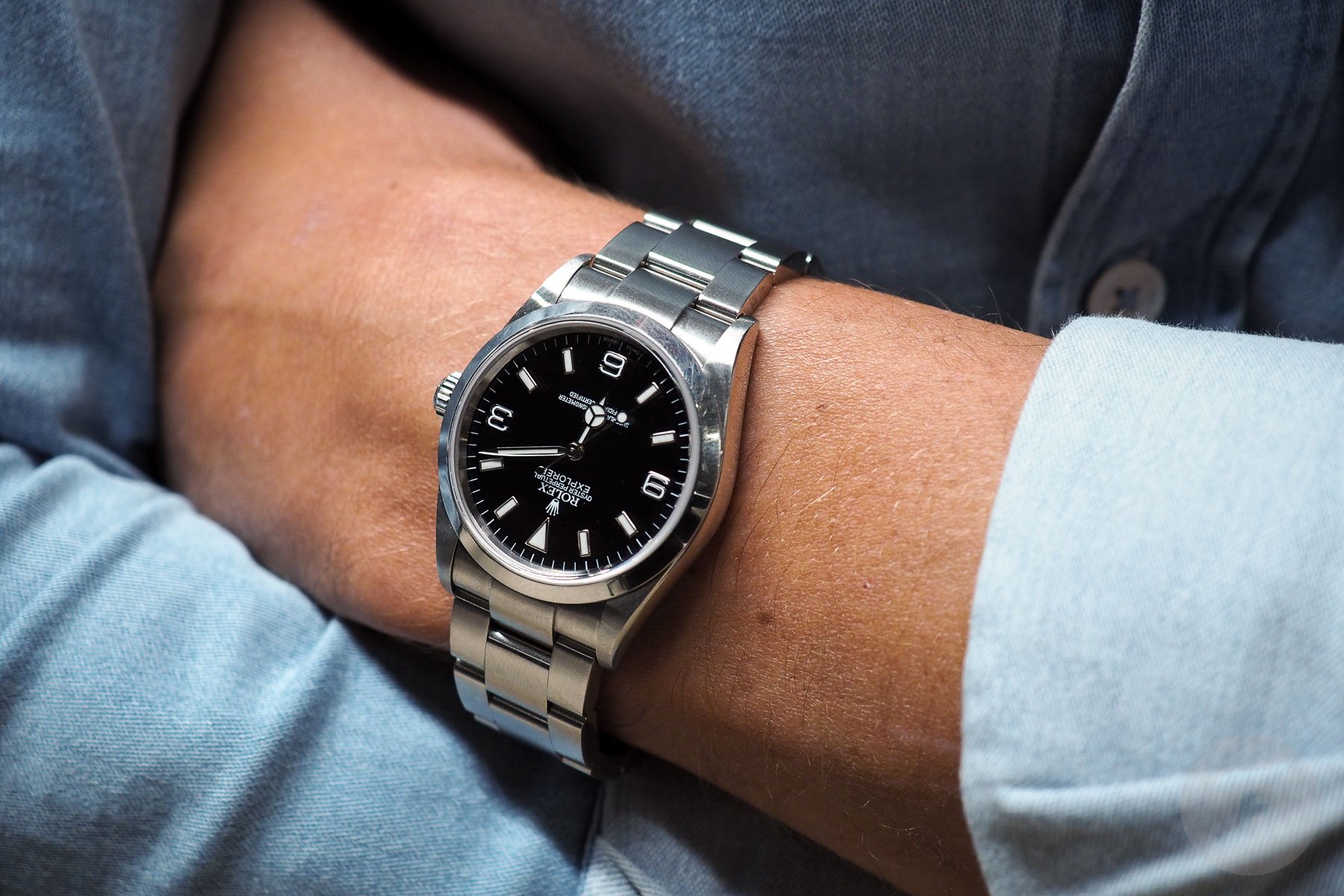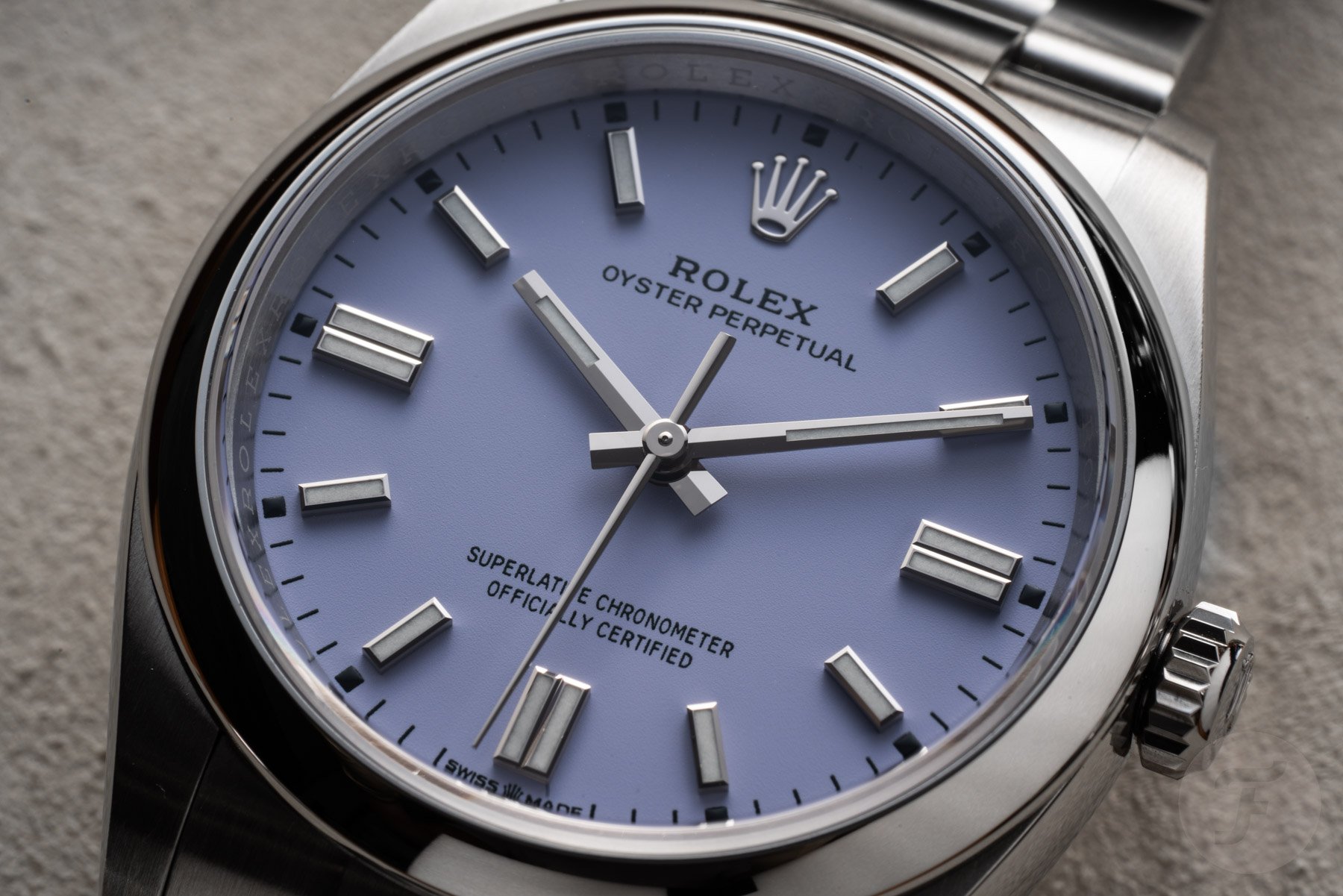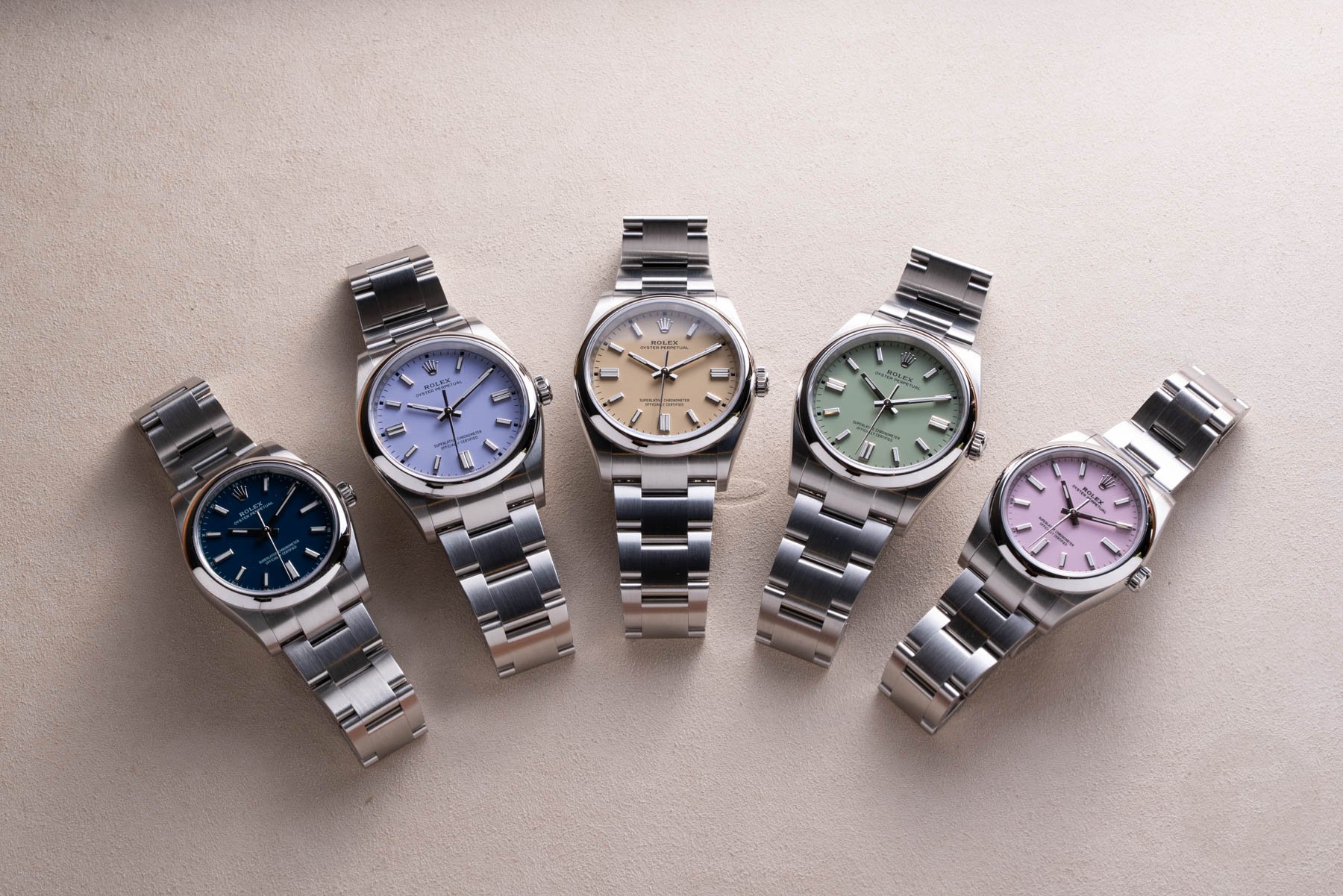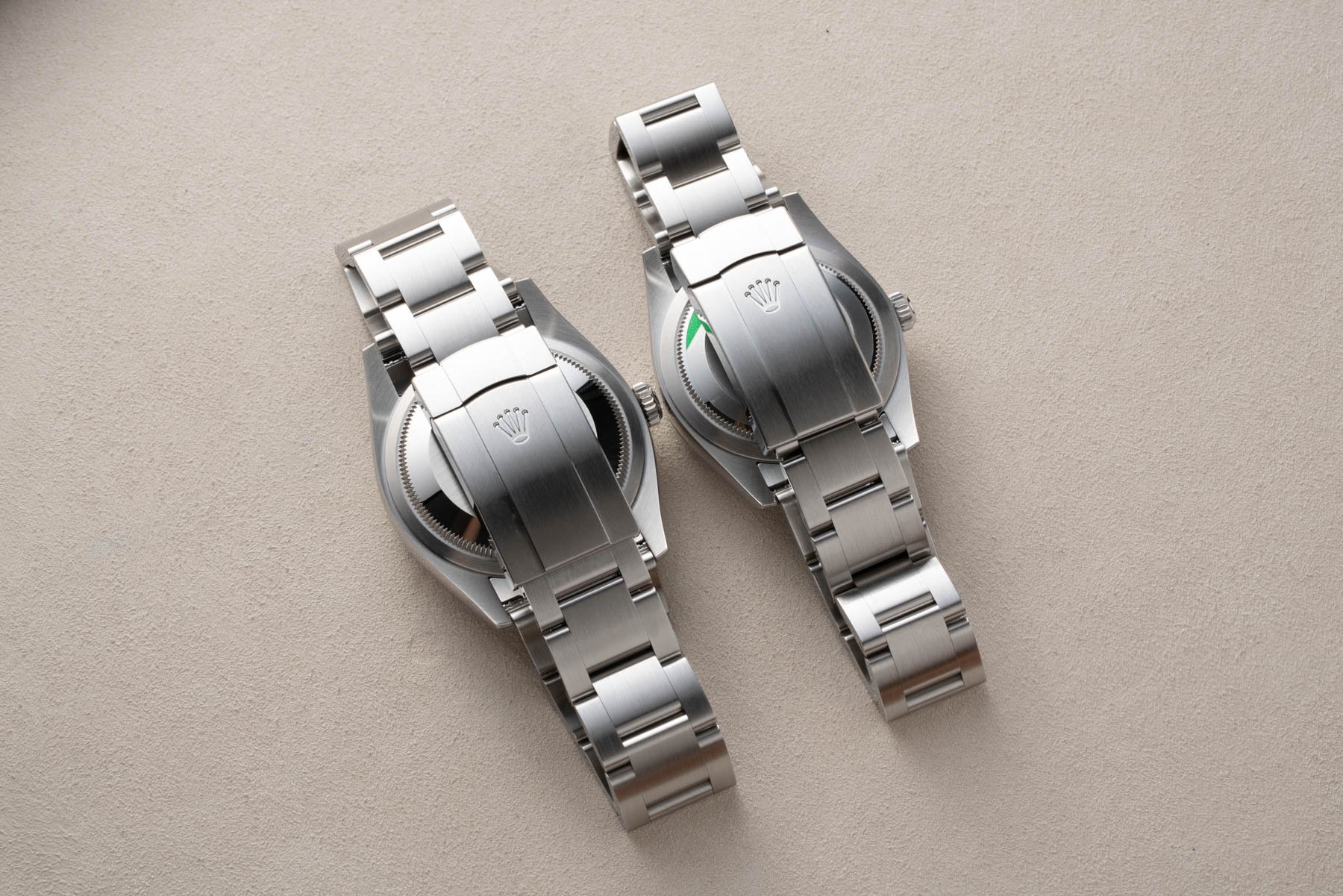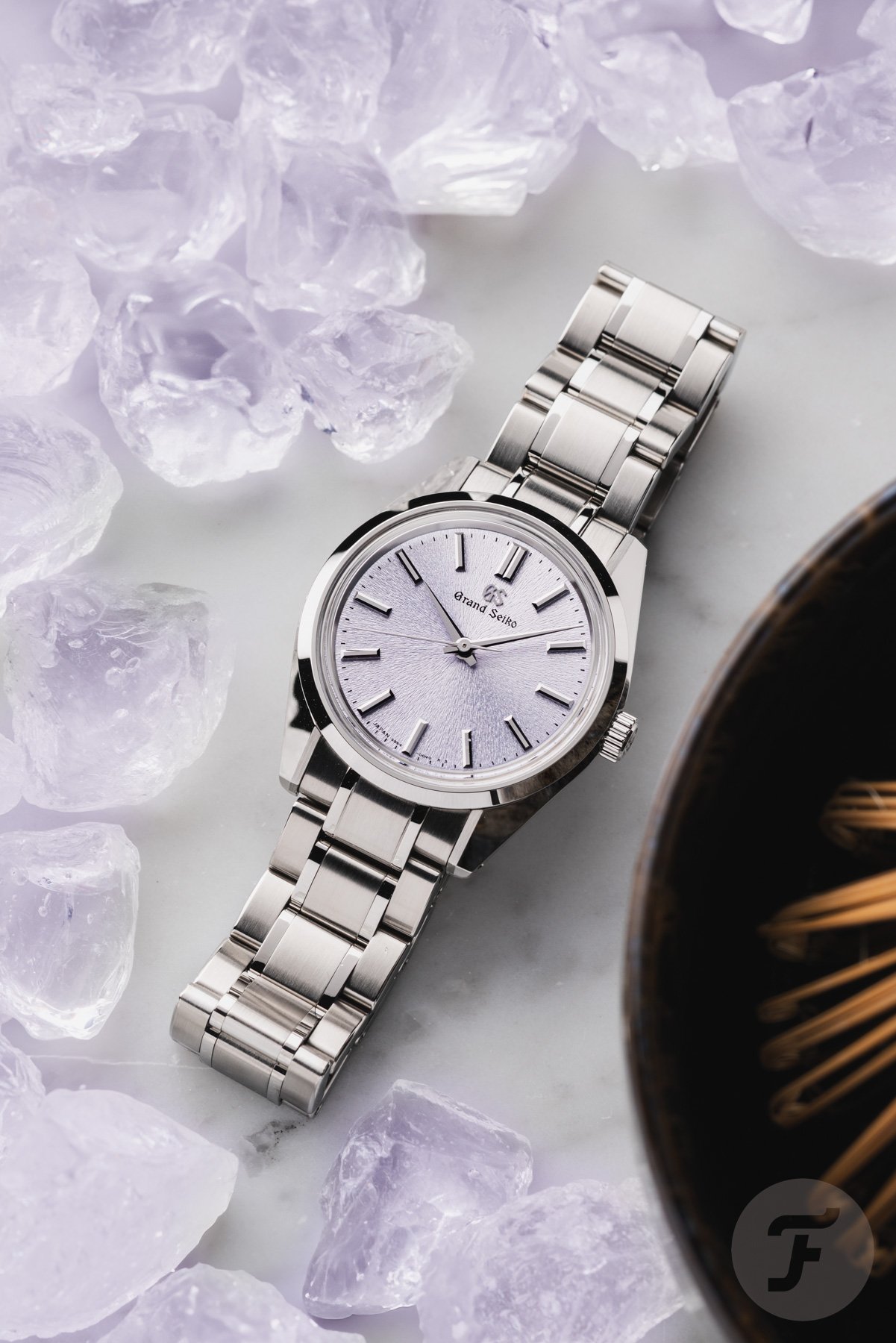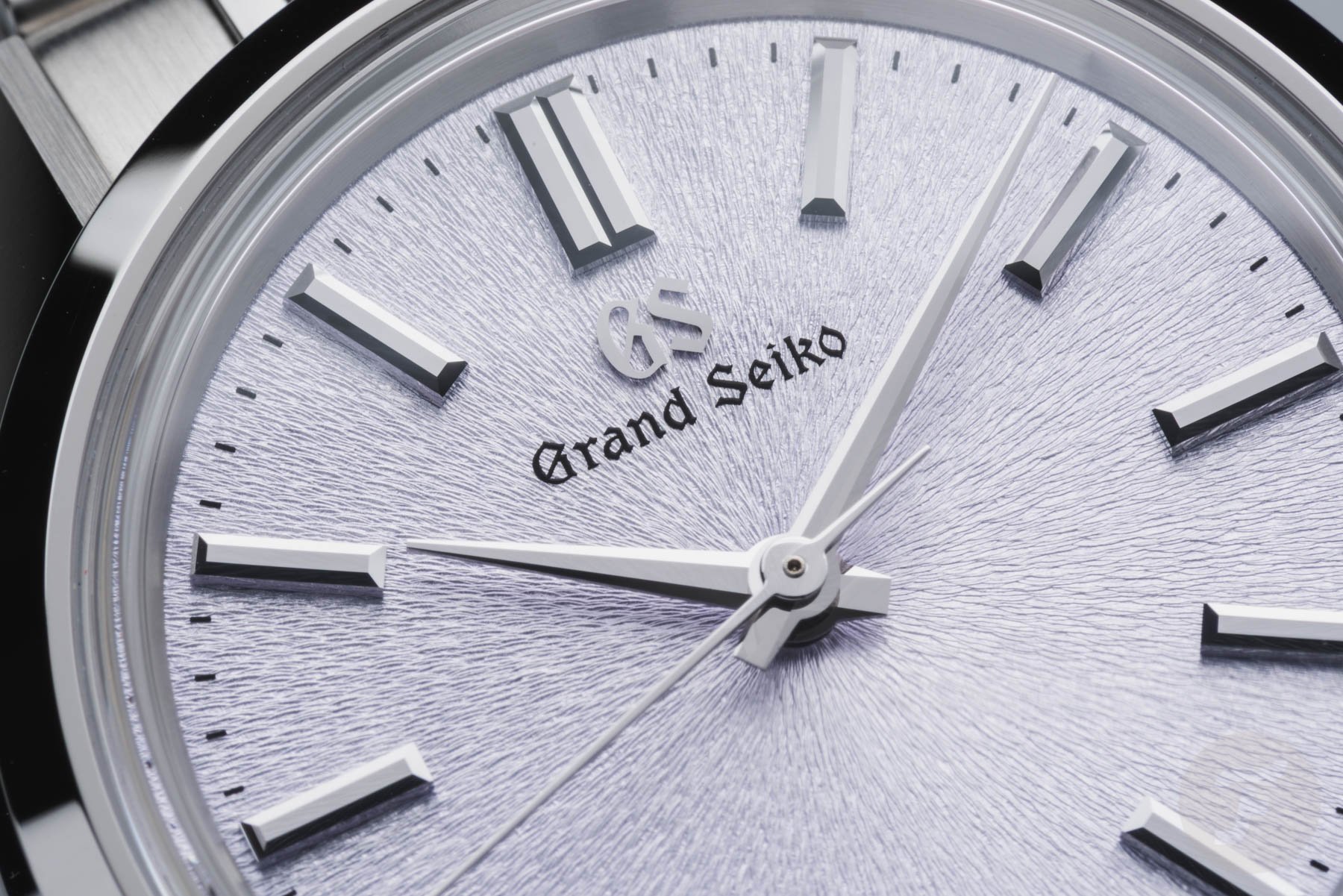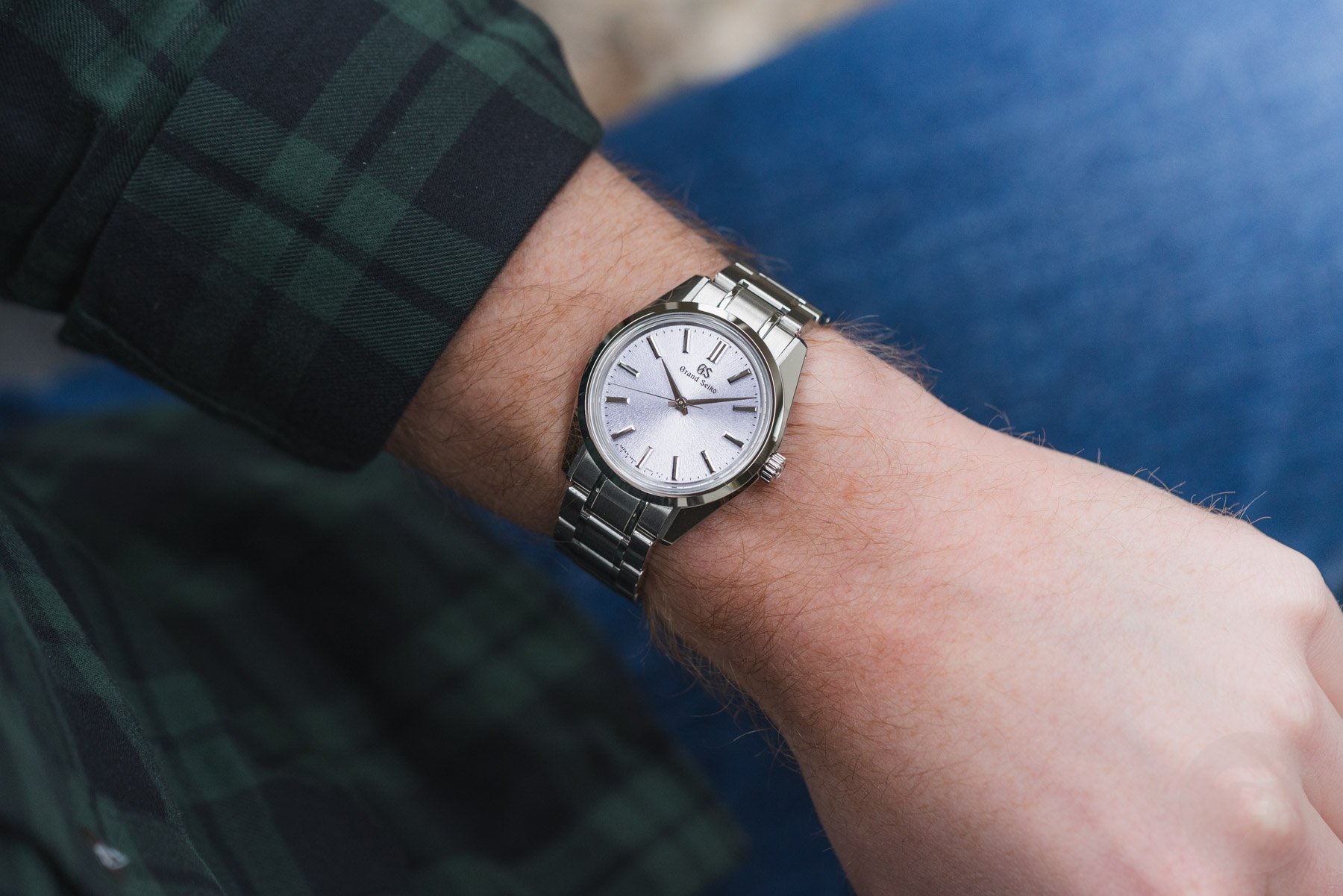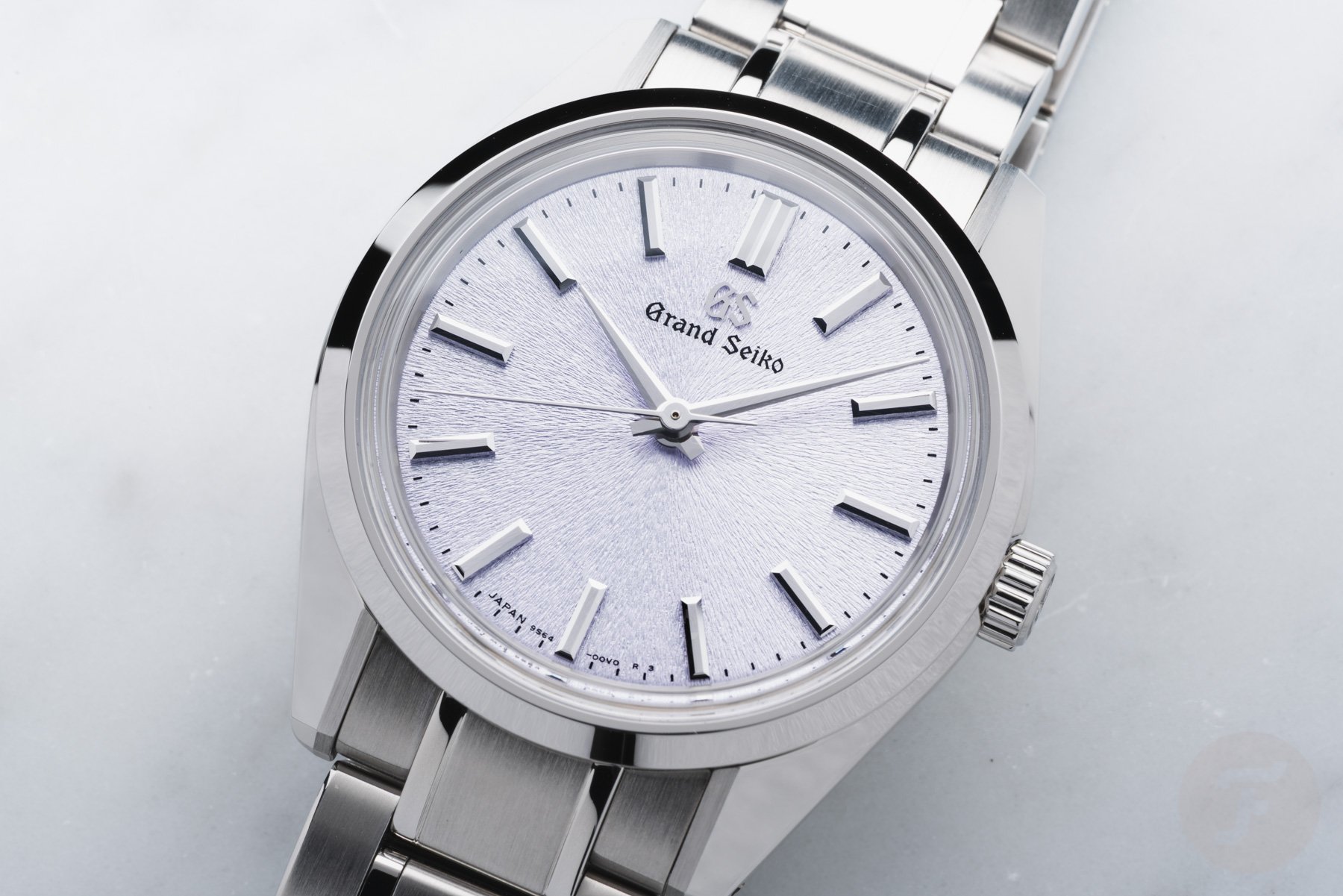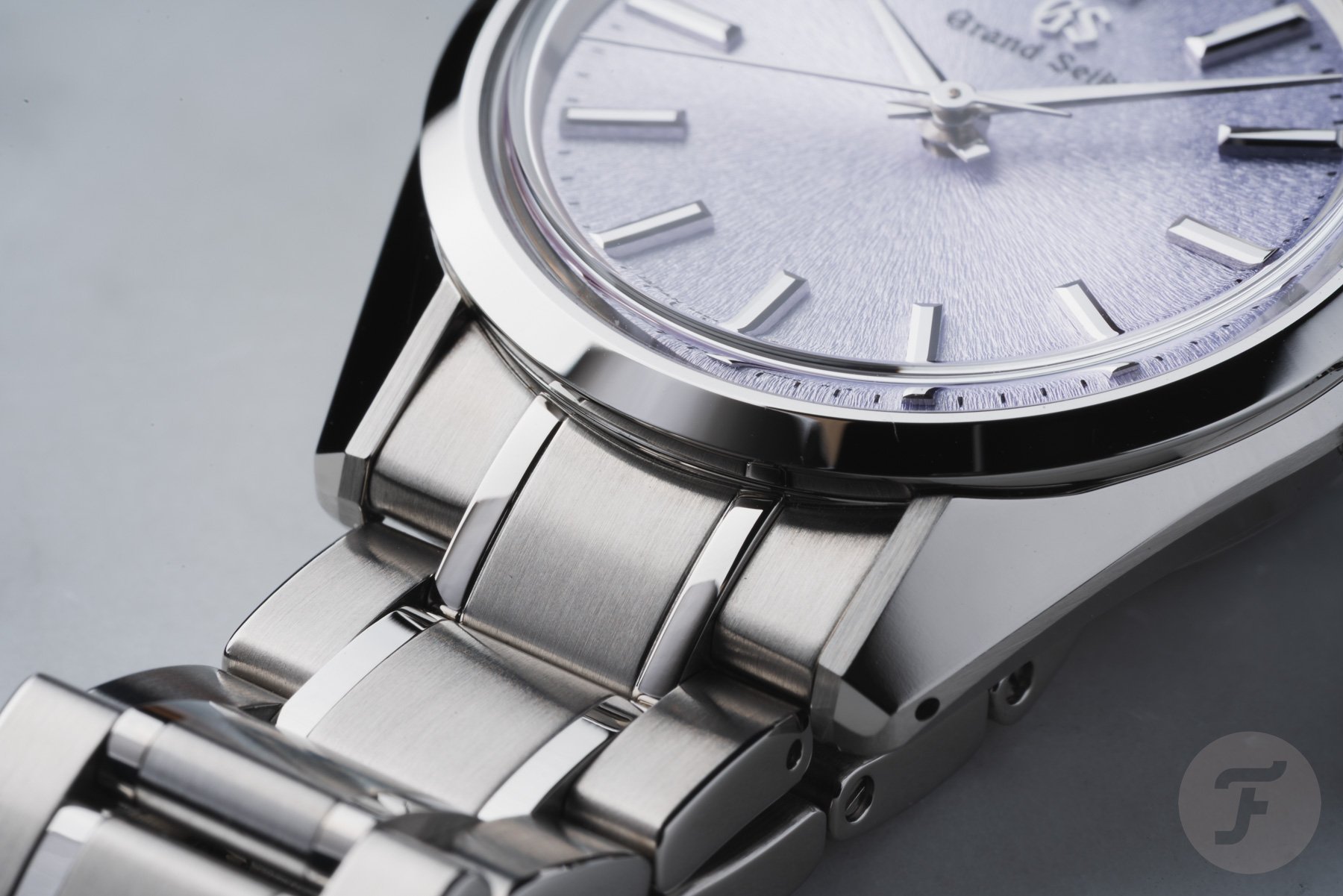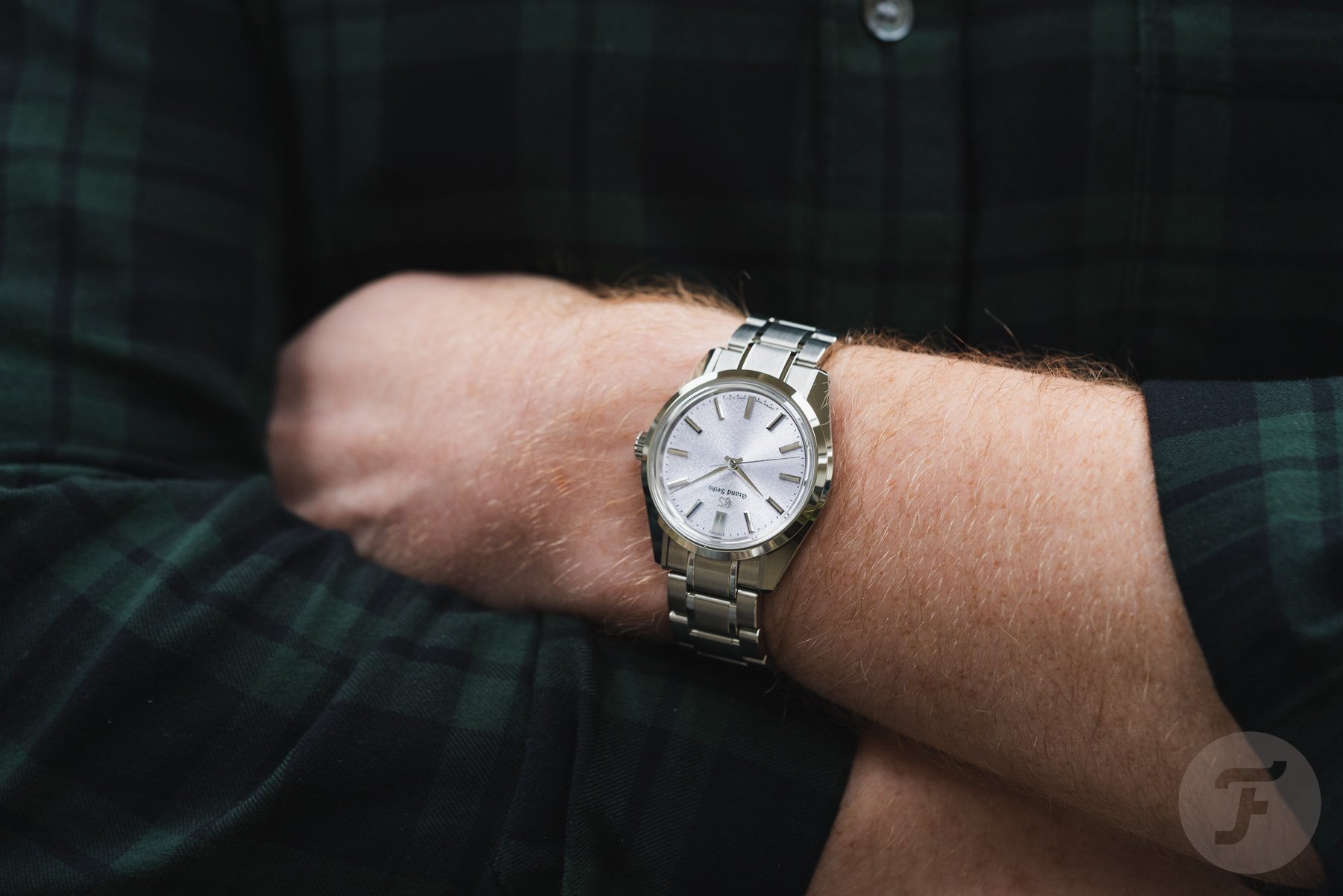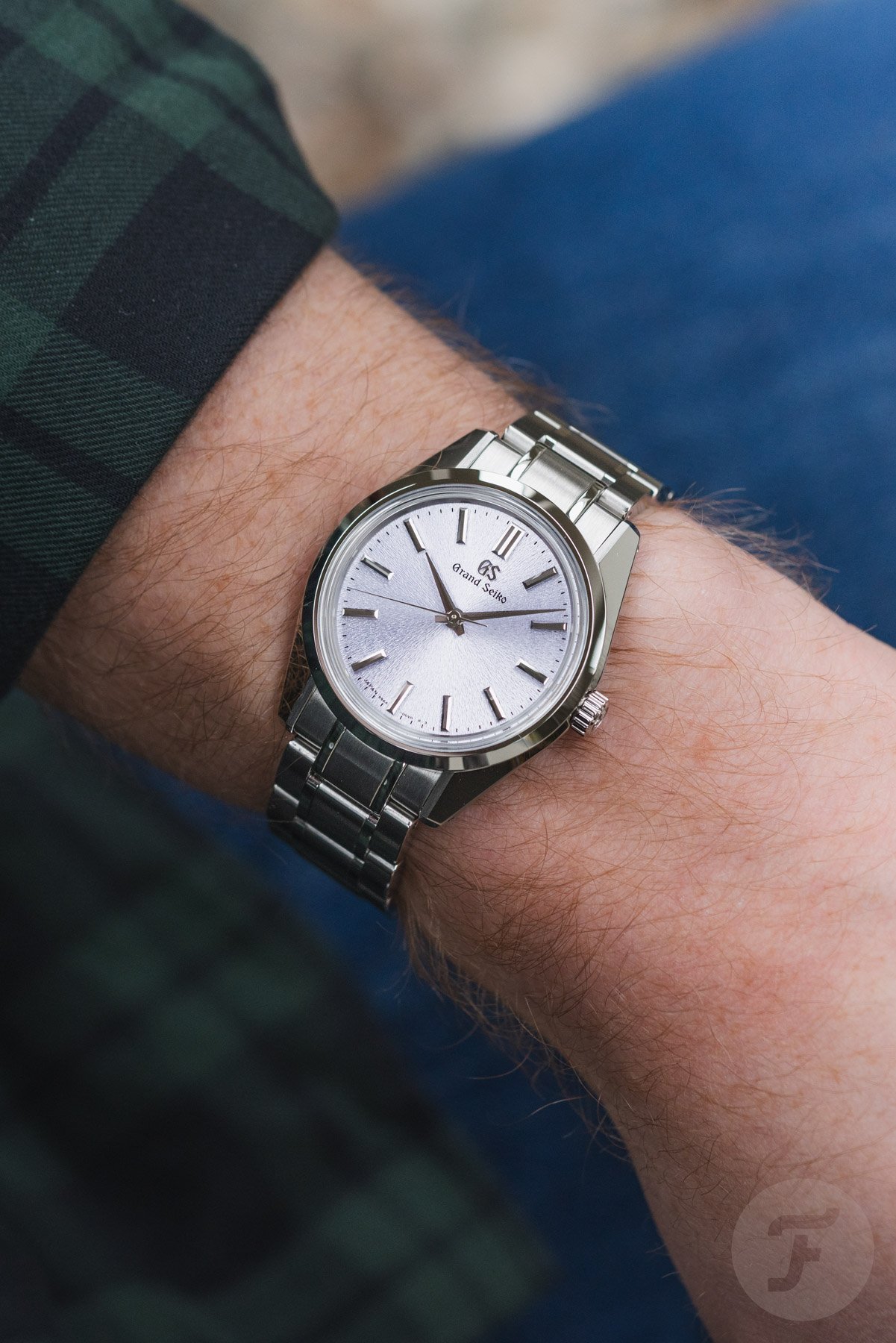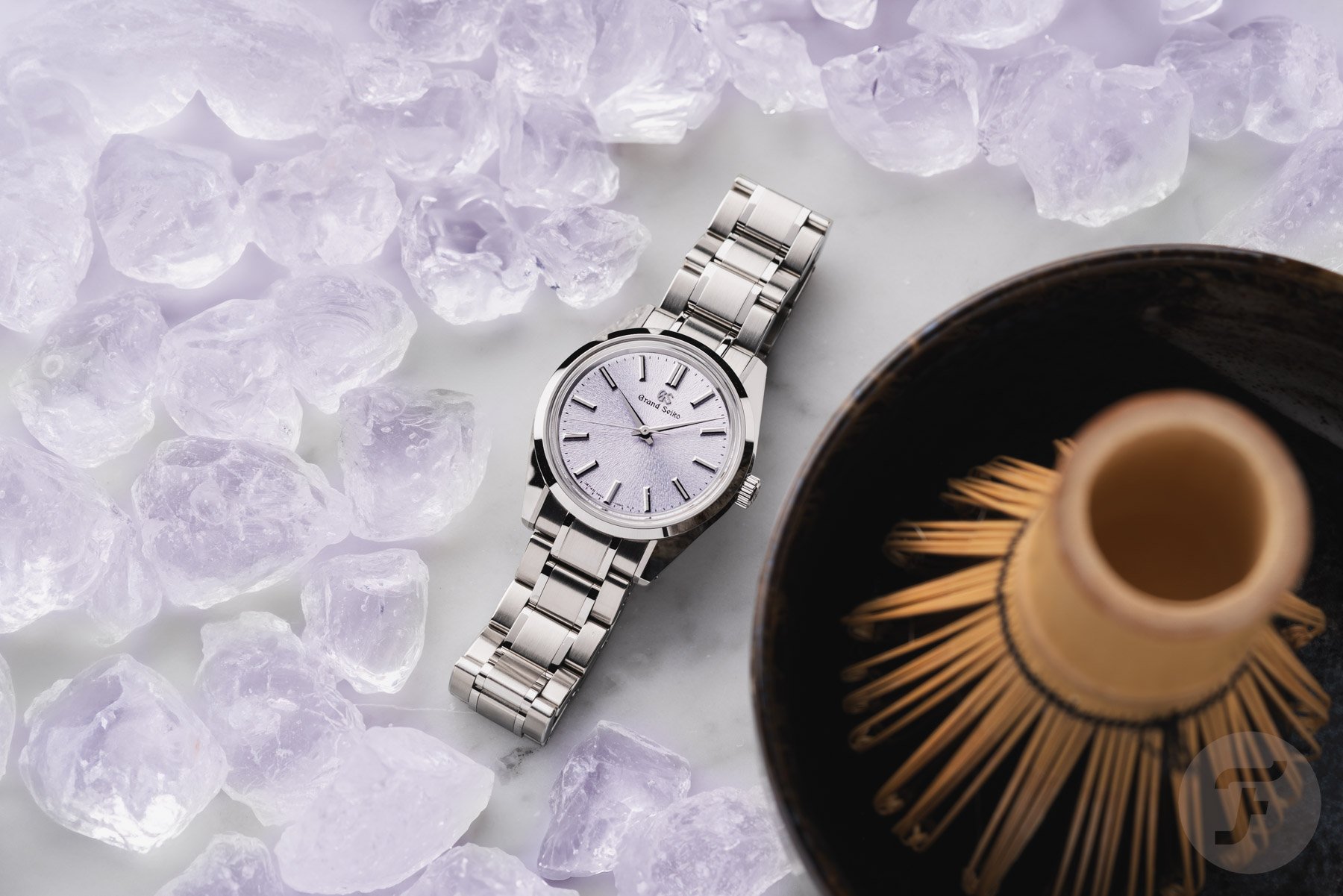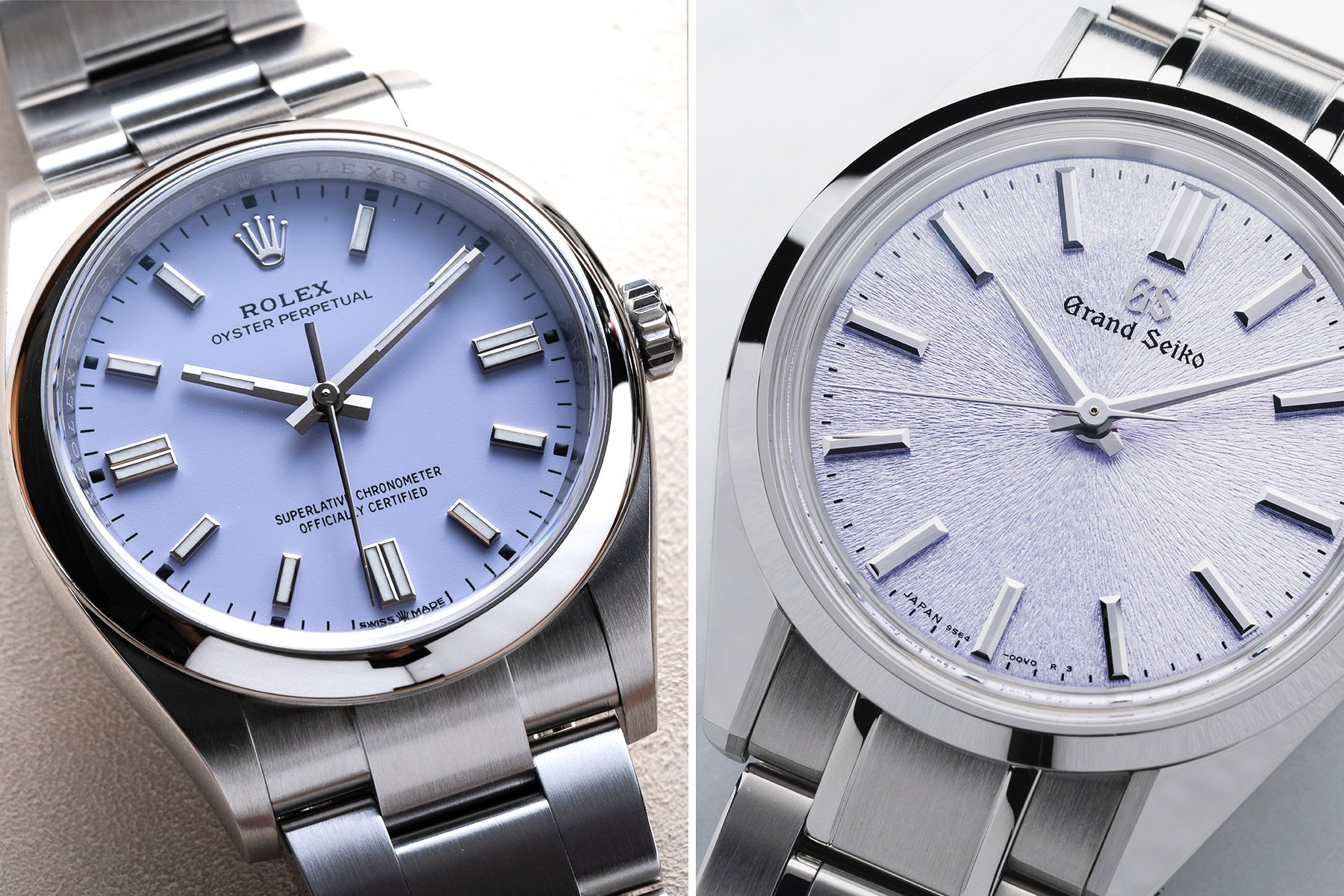Sunday Morning Showdown: Rolex Oyster Perpetual 36 “Lavender” Vs. Grand Seiko “Kiri” SBGW323
Welcome to another installment of Sunday Morning Showdown. This week, we decided to put the Swiss up against the Japanese, each with a purple-dial stainless steel watch of their own. The Rolex Oyster Perpetual with a lavender dial represents the Swiss, while the Grand Seiko “Kiri” SBGW323 represents the Japanese. Both came out during Watches and Wonders this year, have clean time-only dials, and come in iconic stainless steel cases. That gives Thomas and Daan enough similarities to compare them. But there are also more than enough differences to call out and formulate a preference for one or the other.
As always, before we get into our writers’ arguments, let’s quickly recap what happened in last week’s Sunday Morning Showdown.
Previously, on Sunday Morning Showdown…
Last week, it was Oris versus Longines, external versus internal bezel, beige versus white dial, and date versus no date. In the end, the Oris Divers Date collected 53% of the votes, while the Longines Legend Diver wasn’t far behind at all with 47%. Looking at the comments, it seems the Oris got the benefit of the doubt because it offers more value for the money. At €2,450 for the Divers Date, the Legend Diver just couldn’t compete with its price of €3,800. Let’s see what will happen when Oris introduces a Calibre 400 version of the watch. Then, the prices will most likely be very similar, and we’ll have a more even competition. The prices of this week’s contenders are a bit closer together, so let’s see what will happen.
Daan: Rolex Oyster Perpetual 36 “Lavender”
That’s right; the 36mm Rolex Oyster Perpetual ref. 126000-0013 with a matte lavender dial costs €6,400, and the 36.5mm Grand Seiko “Kiri” SBGW323 comes in at €6,000. Price-wise, then, our contenders aren’t that far apart this week. Of course, a Rolex is always harder to get at the list price, and you might even be able to get a discount on the Grand Seiko in today’s market. However, for the argument’s sake, let’s keep those list prices in mind for today’s battle.
I own a Rolex Oyster Perpetual. All right, it’s an Explorer variant, the reference 114270, from 2005. But still, it’s very similar to the lavender version I’m defending today. My Oyster Perpetual is the perfect Rolex for me. Its 36mm size is so comfortable on my 17cm wrist, and the Oyster bracelet is one of the best bracelets in the business. If I’m not sure exactly what my day holds, but I want to wear a watch that can do anything, I wear this one. And that happens many days of the year.
A matte lavender dial
The new Rolex Oyster Perpetual with a lavender dial might be a bit less under the radar than my black-dial Explorer. However, the dial on the new OP is matte instead of glossy. So it’s colorful, yes, but modestly so. Thanks to the baton indexes, straight hands, and the all-steel case and bracelet, it’s a perfect watch to wear with casual attire. That said, you could even dress it up by swapping the bracelet for a classy leather strap.
The Rolex Oyster Perpetual is a strong-looking watch without being too bulky or in your face. That also depends on the size you choose, of course. However, especially with this lavender dial, it offers the perfect balance between muscles and playfulness. The color is toned down, somewhere in between blue and purple. So, it’s subtle and friendly, just like the convex, polished bezel on top.
The best bracelet, period
The Oyster bracelet on my 2005 Rolex Explorer has hollow center links, and the clasp doesn’t offer on-the-go micro-adjustment. Still, it’s one of the best-constructed bracelets out there. I dare say that the updated version of the Oyster bracelet, with its completely solid links and 5mm toolless Easylink extension, is the best bracelet on the market. It feels incredibly solid and perfectly matches the looks of the Oyster case. For me, it’s the bracelet to beat.
Sure, Grand Seiko is known for its high-level finishing and solid construction. Both of those things are true for the bracelet on the SBGW323 as well. However, there’s no toolless micro-adjustment, and I still can’t get over the fact that the bracelet- and case-design departments aren’t talking to each other. The only matching characteristic between the iconic 44GS case and the five-row bracelet is the mixture of brushed and polished finishes. How great would it be if the bracelet links matched the sharp angles on the case? It would make the Kiri look so much better. All right, Thomas, let’s hear it for the SBGW323.
Thomas: Grand Seiko “Kiri” SBGW323
Thank you, Daan! Well, this is a tough matchup — two very impressive “simple” time-only watches following very different philosophies. It is quite fascinating how different the lavender Oyster Perpetual and the Kiri are, even if they pursue a very similar concept.
Let me start by admitting I find your arguments very compelling, Daan. I agree that the modern Oyster bracelet is second to none in its class. In fact, it outshines almost any bracelet in any class. That said, if we take that as the be-all and end-all of watch quality, Rolex wins any comparison. Similarly, we should be careful not to revert to comparing specs sheets over all else. Sure, toolless micro-adjustment is nice, but we’ve worn watches without it for decades without issue.
There is an interesting distinction between these two watches in that sense. I would argue that the Rolex feels of higher quality, while the Grand Seiko looks higher-end. The lavender-dial Oyster Perpetual is probably machined to a higher standard, while the Kiri is finished to a higher standard. The question, then, is whether you value the look or the feel. If you hold these side by side, the Kiri will dazzle you with light play from its razor-sharp Zaratsu surfaces. The Rolex will wow you with how it feels like a piece of precision engineering. As a little aside, who else would love to see a Rolex finished by Grand Seiko? That would be killer!
The Grand Seiko “Kiri” SBGW323 over the Oyster Perpetual 36 “Lavender”
I can follow your arguments regarding design, Daan. I agree that the Rolex looks more cohesive. That said, we both view these watches through Western eyes, while only one of them is made in the Western design tradition. If you want to spend your Sunday morning learning a little bit more about design, may I recommend this video on Western versus Eastern design philosophy? I am convinced you will appreciate the Kiri much more after that.
Still, there are a few reasons why I think the Grand Seiko is the one to get here. For starters, it has got the better dial color. The Paulownia-inspired tint is lighter and less saturated. This makes the difference between a watch that works with any outfit and one you have to carefully pair with your apparel. Keep in mind that these are everyday-type watches, so you want that versatility. I can see the Oyster Perpetual’s lavender dial clashing with blue shirts, for instance, but the Kiri’s dial much less so.
Speaking of the dials, the Kiri features a beautiful texture that makes it much more dynamic. Especially when you add the Zaratsu-polished markers and handset, you get a watch that is a joy to behold. You will find yourself gazing at it in different ambient light just to see how it reacts. You won’t even need lume because the watch will pick up the faintest light and reflect it. As a Grand Seiko owner, I can only say this is a joy I wish upon any watch enthusiast.
The more original choice
As a watch enthusiast, I feel the Kiri is also the more original choice. It is more of a conversation starter and a more distinguishing option. While the lavender-dial Rolex Oyster Perpetual 36 might convey that you are part of the Rolex in-crowd, the Grand Seiko Kiri says that you are a unique individual with a taste of your own. What would you rather have your watch say about you?
It also helps that you can pursue an SBGW323 without having to grovel. Your Grand Seiko boutique will welcome you and sort you out rather than smirking arrogantly and asking you about your purchase history. I don’t know about you, but I know what I feel is the more desirable luxury experience. You even get to keep a little money in your pocket, enough to treat your significant other to a very fancy dinner while rocking your new Grand Seiko.
A more involved experience than the Oyster Perpetual
Finally, I think you get more of an experience altogether when you pick the Kiri over the lavender-dial Oyster Perpetual. Besides the mesmerizing dial and case, you get a hand-wound caliber. As you may know, I have a soft spot for manually winding GADA watches. I love the little moment of attentive interaction with your watch in the morning. It feels like a reciprocal process — I bring the watch to life, and it will serve me all day in return.
Especially with a caliber as nice as the Grand Seiko 9S64, winding is a joy. It feels buttery smooth with a subtle but confident ratchet. And even if you are a convenience-first type of watch enthusiast, the Grand Seiko works. After all, you can choose not to wind it every day. I don’t know why you wouldn’t, but the 72-hour power reserve offers ample freedom in that regard.
All in all, I think the Grand Seiko will feel more engaging and personal. As a result, I would pick the Oyster Perpetual in black or dark blue to make it the perfect sling-it-on-and-go versatile GADA watch. When it comes to more specific dial colors, such as light purple, I would always pick the more engaging Grand Seiko.
Cast your vote
There you have it — two very similar watches that, at the same time, could hardly be more different. Which would be your pick? Cast your vote and share your motivation in the comments section below.

